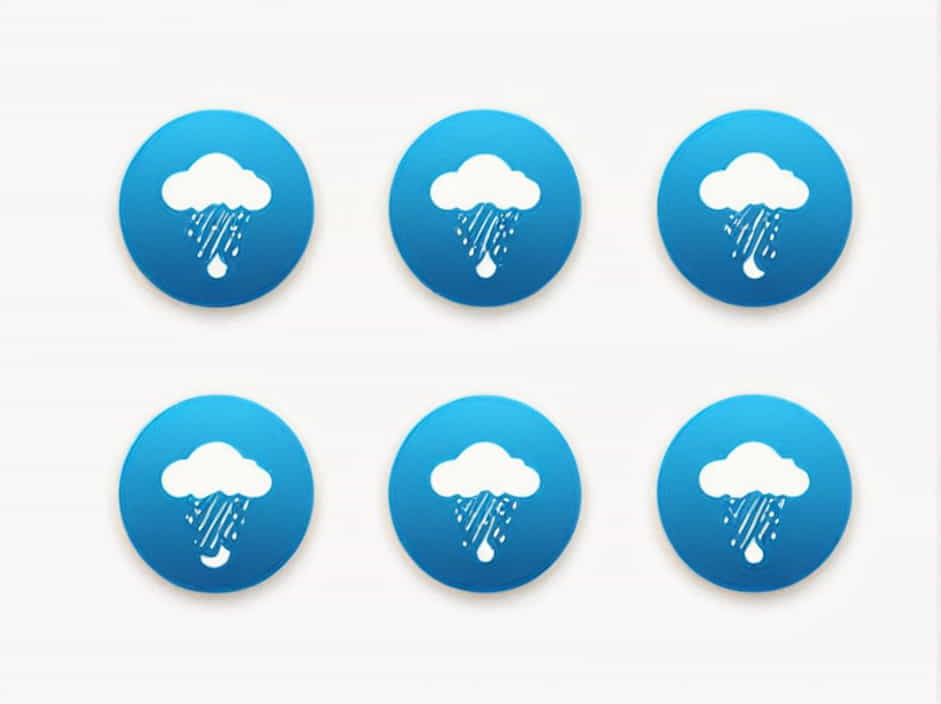Convectional rainfall is a type of precipitation that occurs due to the intense heating of the Earth’s surface. It is common in tropical and equatorial regions, where high temperatures lead to rapid evaporation and cloud formation. This process results in heavy rain showers, often accompanied by thunderstorms.
Understanding the mode of formation of convectional rainfall is essential for meteorology, agriculture, and climate studies. This topic explores how convectional rainfall forms, its characteristics, and its impact on the environment.
What Is Convectional Rainfall?
Convectional rainfall is a type of precipitation caused by the heating of the Earth’s surface. It occurs when the sun heats the ground, causing moist air to rise, cool, condense, and form clouds, eventually leading to rainfall.
Key Features of Convectional Rainfall:
- Common in tropical and equatorial regions (e.g., Amazon Rainforest, Southeast Asia, and Central Africa).
- Occurs mostly in the afternoon due to peak daytime heating.
- Characterized by short but intense rain showers.
- Often associated with thunderstorms and lightning.
- Not influenced by mountains or frontal systems.
Mode of Formation of Convectional Rainfall
The formation of convectional rainfall follows a step-by-step process driven by solar heating. Below is a detailed explanation of how it occurs:
1. Intense Solar Heating
The process begins when the sun’s rays heat the Earth’s surface, particularly in tropical and equatorial regions. Areas with dark surfaces, water bodies, and moist soil absorb more heat, increasing surface temperatures.
As the land heats up, the air in contact with it also warms up. This warm air expands and becomes less dense, making it lighter than the surrounding cooler air.
2. Rising of Warm, Moist Air (Convection Process)
Since warm air is lighter and more buoyant, it begins to rise rapidly. This process is known as convection.
As the air rises, it carries water vapor from lakes, rivers, forests, and moist soil into the atmosphere. The more moisture the air contains, the greater the potential for cloud formation and rainfall.
3. Cooling and Condensation
As the warm, moist air rises, it enters higher altitudes where the temperature is lower.
- As the air cools, it loses its ability to hold moisture.
- Water vapor begins to condense around tiny dust ptopics (condensation nuclei), forming cumulonimbus clouds.
- This condensation process releases latent heat, which further fuels the upward movement of air, creating more cloud formation.
4. Cloud Development and Growth
The rising moist air continues to cool and condense, leading to the rapid growth of cumulonimbus clouds. These are large, dense, and vertically developed clouds commonly associated with thunderstorms and heavy rainfall.
5. Precipitation Occurs
When the water droplets within the clouds combine and grow larger, they become too heavy to remain suspended in the air. Gravity pulls them down as raindrops, resulting in convectional rainfall.
This rainfall is usually:
- Short-lived but intense, often occurring in the afternoon or early evening.
- Accompanied by thunder and lightning due to the strong updrafts and downdrafts within the clouds.
6. Evaporation and the Cycle Repeats
After the rain falls, the cycle restarts the next day as the sun heats the surface again, leading to another round of convectional rainfall. This process is continuous in tropical climates, contributing to their high annual rainfall.
Regions Where Convectional Rainfall Occurs
1. Equatorial Regions
Convectional rainfall is most common in the equatorial belt (0° latitude), where high temperatures and humidity create ideal conditions for daily rain showers.
Examples include:
- Amazon Rainforest (South America)
- Congo Basin (Africa)
- Southeast Asia (Indonesia, Malaysia, Philippines, etc.)
2. Tropical Rainforests
- These regions receive rain almost every day due to strong convection.
- The high humidity supports continuous cloud formation and heavy downpours.
3. Warm Coastal Areas
- Coastal regions with warm ocean currents experience convectional rainfall.
- Evaporation from the ocean supplies moisture for cloud formation.
Characteristics of Convectional Rainfall
- High intensity but short duration – Rainfall lasts for 30 minutes to a few hours.
- Occurs mostly in the afternoon due to maximum daytime heating.
- Forms cumulonimbus clouds, which produce thunder and lightning.
- Associated with warm, humid climates, leading to lush vegetation.
- Occurs frequently in tropical rainforests, influencing local climate patterns.
Impact of Convectional Rainfall
1. Positive Effects
- Supports plant growth – Regular rainfall sustains tropical rainforests and agricultural lands.
- Maintains water sources – Contributes to rivers, lakes, and groundwater recharge.
- Regulates local temperatures – Rain cools down hot surfaces, preventing extreme heat buildup.
2. Negative Effects
- Flooding and soil erosion – Heavy rainfall can cause flash floods and land degradation.
- Thunderstorms and lightning – Increases risk of wildfires, electrical disruptions, and injuries.
- Infrastructure damage – Strong winds and heavy rain may damage buildings, roads, and farmlands.
Differences Between Convectional, Cyclonic, and Orographic Rainfall
| Type of Rainfall | Cause | Common Locations | Cloud Type | Duration |
|---|---|---|---|---|
| Convectional | Surface heating and rising warm air | Tropics, equatorial regions | Cumulonimbus | Short but intense |
| Cyclonic (Frontal) | Air mass collision (warm vs. cold air) | Mid-latitudes, temperate regions | Nimbostratus | Moderate, long-lasting |
| Orographic | Air forced over mountains | Mountainous areas | Stratus/Cumulus | Variable, depends on terrain |
Convectional rainfall is a vital part of Earth’s climate system, particularly in tropical and equatorial regions. It occurs due to intense solar heating, rising moist air, cloud formation, and precipitation.
This type of rainfall plays a crucial role in sustaining rainforests, agriculture, and water resources but can also cause flooding and severe storms. Understanding its mode of formation helps in weather prediction, climate studies, and disaster management.
By recognizing convectional rainfall’s patterns and effects, we can better prepare for and adapt to its impact on the environment and daily life.
